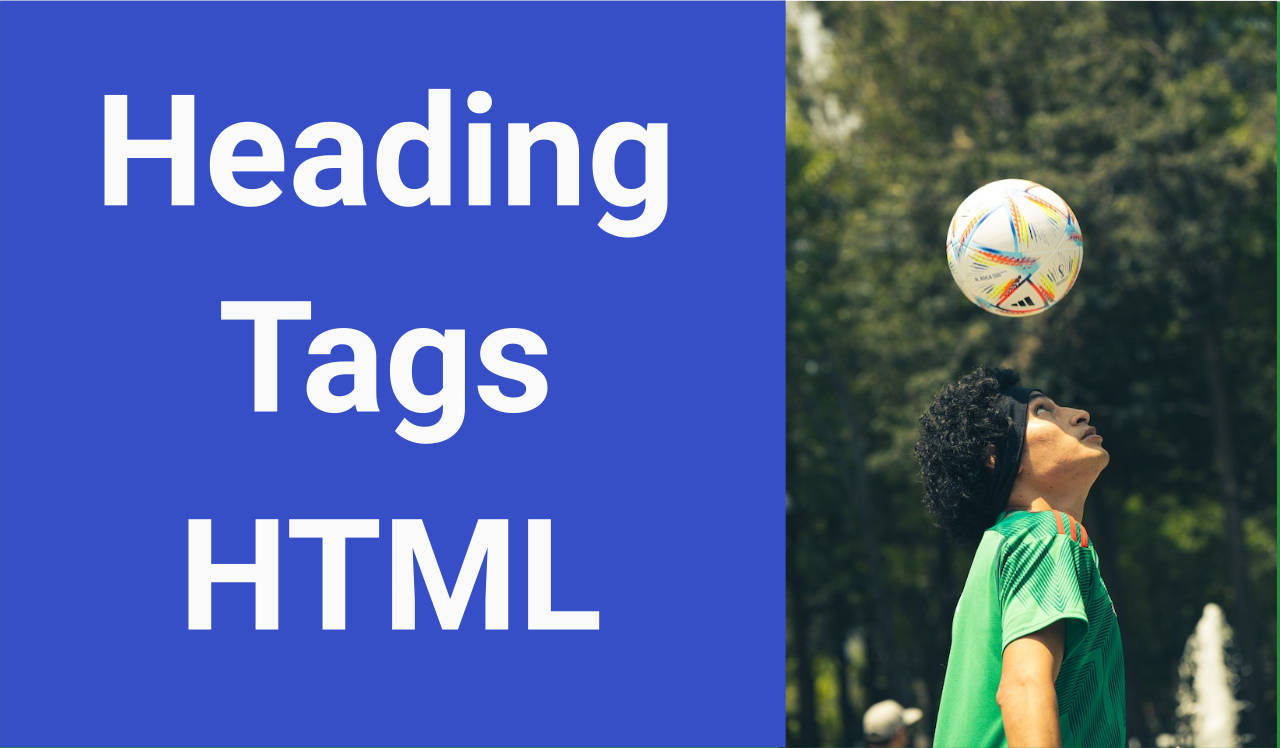How Many Heading Tags Are There in HTML? [Answered]
HTML has six different heading tags, ranging from h1 to h6. The h1 tag is the most important and represents the main heading on a page. The h2 tag represents a subheading, and so on, with the h6 tag being the least important.

They six HTML heading tags are: Here are the six heading tags in HTML:
- h1:
<h1>H1 Heading Text</h1> - h2:
<h2>H2 Heading Text</h2> - h3:
<h3>H3 Heading Text</h3> - h4:
<h4>H4 Heading Text</h4> - h5:
<h5>H5 Heading Text</h5> - h6:
<h6>H6 Heading Text</h6>
It’s important to use headings correctly as they play a crucial role in creating a clear structure for your content and improving its readability. Search engines also use headings to understand the content of a web page and rank it in search results.
When creating a web page, it’s recommended to use one h1 tag per page and use the other heading tags appropriately. For example, use h2 tags for main sections, h3 tags for sub-sections, and so on.
Why You Should Use Heading Tags in HTML
Using heading tags in HTML has several benefits for both users and search engines. Here are a few reasons why you should use heading tags in your HTML code:
- Improving Readability: Heading tags make it easier for users to scan the content of a web page and understand the structure of the information. They provide visual cues that break up long blocks of text and help users quickly locate the information they’re looking for.
- Search Engine Optimization (SEO): Search engines use heading tags to understand the content of a web page and rank it in search results. Proper use of heading tags can improve a web page’s SEO and make it more visible in search engine results pages (SERPs).
- Accessibility: Heading tags also help improve accessibility for users with disabilities who may use assistive technologies like screen readers to navigate the web. These technologies use heading tags to create a hierarchical structure of the content on a page, making it easier for users to understand and navigate the information.
- Consistent Formatting: By using heading tags, you can ensure that your content is consistently formatted and easy to read. This is especially important for larger web pages with a lot of content.
Using heading tags in HTML creates a clear structure for your content, improving readability, and optimizing your web pages for search engines and accessibility. Make sure to use them appropriately to get the most out of these benefits.
When Should You use Heading Tags in HTML
Heading tags should be used to structure the content on your web page. Some guidelines that can help you decide when to use heading tags in HTML:
- Start with h1: The h1 tag should be used as the main heading on a page. There should only be one h1 tag per page, and it should accurately reflect the main topic of the page.
- Use h2-h6 for Subheadings: The h2 to h6 tags can be used for subheadings within the content of the page. Use these tags to break up the content into smaller, more manageable sections and to help readers quickly locate the information they’re looking for.
- Use Headings Hierarchically: When using headings, it’s important to use them in a hierarchical manner. This means using h2 tags for main sections, h3 tags for sub-sections, and so on. This creates a clear structure for the content and helps both readers and search engines understand the content of the page.
- Keep Headings Short: Headings should be short and descriptive, summarizing the content that follows. Avoid using long headings that are difficult to understand or that contain too much information.
Heading tags in HTML should be used to structure the content on a page, making it easier to read and navigate. Make sure to use headings hierarchically and keep them short and descriptive to get the most out of their benefits.

